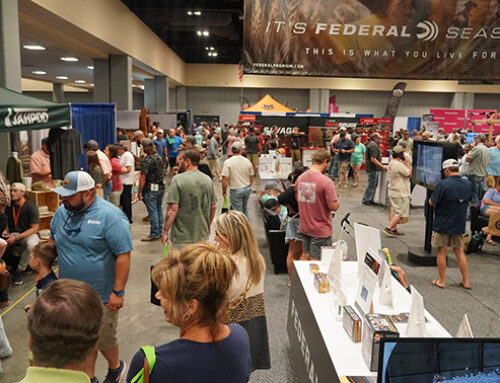2023 State Breeding Waterfowl Population Survey Roundup
North Dakota, California show increases over last year

By Paul Wait
While duck and goose hunters anxiously await results from the comprehensive 2023 Waterfowl Breeding Population and Habitat Survey expected soon from the U.S. Fish and Wildlife Service, several independent state waterfowl surveys have been released.
Wetland habitat conditions in the key prairie pothole region were good to excellent in the Dakotas and Manitoba, but fair to poor across western Saskatchewan and Alberta during the 2023 waterfowl breeding season. Notably, wetland conditions improved dramatically in California. Duck production should be good across many key areas of the prairies this year, with more young ducks in the fall flight.
Delta Waterfowl will provide extensive analysis as soon as the USFWS Population Status Report is released.
Here’s a roundup of state survey results.
North Dakota
Results from North Dakota Game and Fish Department’s annual breeding waterfowl and wetland survey revealed good to excellent conditions for breeding ducks.
“We had a lot of snow last winter and ended up with our seventh-highest wetland index, which is a little bit less than last year (second highest ever), but still very, very good,” said Mike Szymanski, migratory game bird supervisor for the NDGFD.
The total duck number was estimated just above 3.4 million, a slight increase over the breeding population from 2022. While ducks are up overall, mallards are down 10% at 640,000, with blue-winged teal also slightly lower but still a strong 925,000 in the state.
Szymanski reported increases in redheads, canvasbacks, and shovelers over 2022, but the most pleasant surprise is a 40% increase in breeding pintails, bringing their breeding populations in North Dakota back to numbers not seen in the state since the 2000s.
While Szymanski said habitat conditions ranged from fair to excellent across North Dakota, heavy rains in key areas in early May should have resulted in good duck production.
Canada goose numbers declined 27%, however they were at an all-time high in 2022. The estimated 297,000 Canada geese represents a strong population, Szymanski said.
Wisconsin
The state’s wetlands started spring in good shape, but drier conditions have persisted across much of the state.
The spring waterfowl survey showed mixed results, with total ducks estimated at 545,065, down 4% from 2022 but 23% above the long-term mean (LTM). Mallards were estimated at 175,895, down less than 1%, and 2% below the LTM. Wood duck estimates of 102,381 fell 29% but remain 20% higher than LTM. Blue-winged teal at 96,271 were up 6% over 2022 but 9% lower than LTM.
Resident Canada geese continue to thrive in Wisconsin. The estimate of 169,447 geese is down 1% from last year, but still 58% higher than LTM.
Wisconsin has a modeled breeding population of 13,643 trumpeter swans.
Minnesota
Spring came late to “The Land of 10,000 Lakes,” with ice-out occurring 10 to 15 days later than normal. The number of wetlands dropped by 16% from 2022, which was an exceptionally wet spring. Wetlands were 11% above the long-term average (LTA), which accounts for all years back to 1968.
Minnesota estimates 222,000 breeding mallards in 2023, which is down 4% and sits 3% below the LTA. Blue-winged teal were estimated at 126,000, down 22% and 40% below the LTA. The estimate for total ducks was 481,000, a 15% decline and 22% below the LTA.
Canada geese were unchanged from 2022 at 115,000, but that estimate is 26% below LTA. Swans, however, continue to increase, with an estimate of 39,000, up significantly from 25,000 in 2022.
“Despite the late spring, wetland habitat conditions were favorable in May and early indications are that production (number of young birds hatched) will be good for ducks, geese, and swans,” according to the Minnesota Department of Natural Resources.
Oregon
After several years of dry to drought conditions, wetlands are recharging because of excellent winter snowpack and good precipitation. However, duck numbers in the spring breeding survey dropped significantly from last year.
The total duck estimate of 197,982 is down 43%, putting the estimate 26% below the LTA. Mallards, the state’s most-abundant breeding duck, checked in at 68,587, down 14% and 24% below LTA. Gadwalls, estimated at 30,462, declined 34% and sit 43% below LTA. Cinnamon teal were down 49% and 67% below LTA. Canada geese declined 36% to an estimate of 28,861.
“We were surprised the estimates for many of the common breeding species declined by so much, especially for Canada geese. We hypothesize that abundant wetland conditions in northeast California and western Nevada may have redistributed breeding ducks and geese in the region,” said Brandon Reishus, migratory game bird coordinator for the Oregon Department of Fish and Wildlife. “Overall, wetland conditions have improved markedly this year. As such, we expect much improved production this year, relative to the past few years, especially in eastern Oregon.”
California
Abundant rainfall and snow in the mountains have led most people to declare the drought is over. Of course, that’s great news for breeding waterfowl and waterfowl hunters.
Not surprisingly, breeding waterfowl abundance has increased in California. The state’s spring survey estimated the total population of breeding ducks at 495,438, a 30% increase from 2022 but still 9% below the LTA. Mallards, at 202,108, increased 13% but remain 38% below LTA. The number of shovelers checked in at 107,490, up an incredible 134% and 236% above LTA. Gadwalls posted a strong 88,251, which is a 16% increase and 2% above LTA. Cinnamon teal, estimated at 33,477, jumped 45% but are still 21% below LTA.
Canada geese responded to improved wetland conditions. The estimate of 60,353 represents a 30% increase and 36% above LTA.
Waterfowl production is certain to be improved over recent drought years, and hunters should have more hunting opportunities on public lands during the upcoming season.
According to the California Department of Fish and Wildlife, “Full water allotments are forecasted in the Central Valley for wetland management and rice planting. Rice planting is estimated to be close to average, at 485,000 acres. Water allocations on Klamath Basin National Wildlife Refuge Complex are projected to be low despite adequate water supply conditions. Other areas of northeastern California should receive adequate water supply for wetland management.”






Leave A Comment